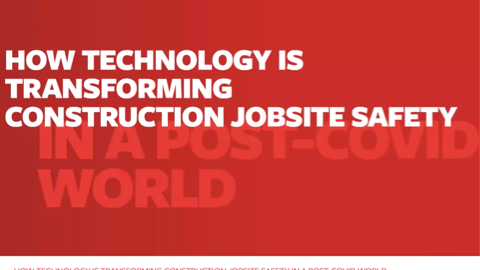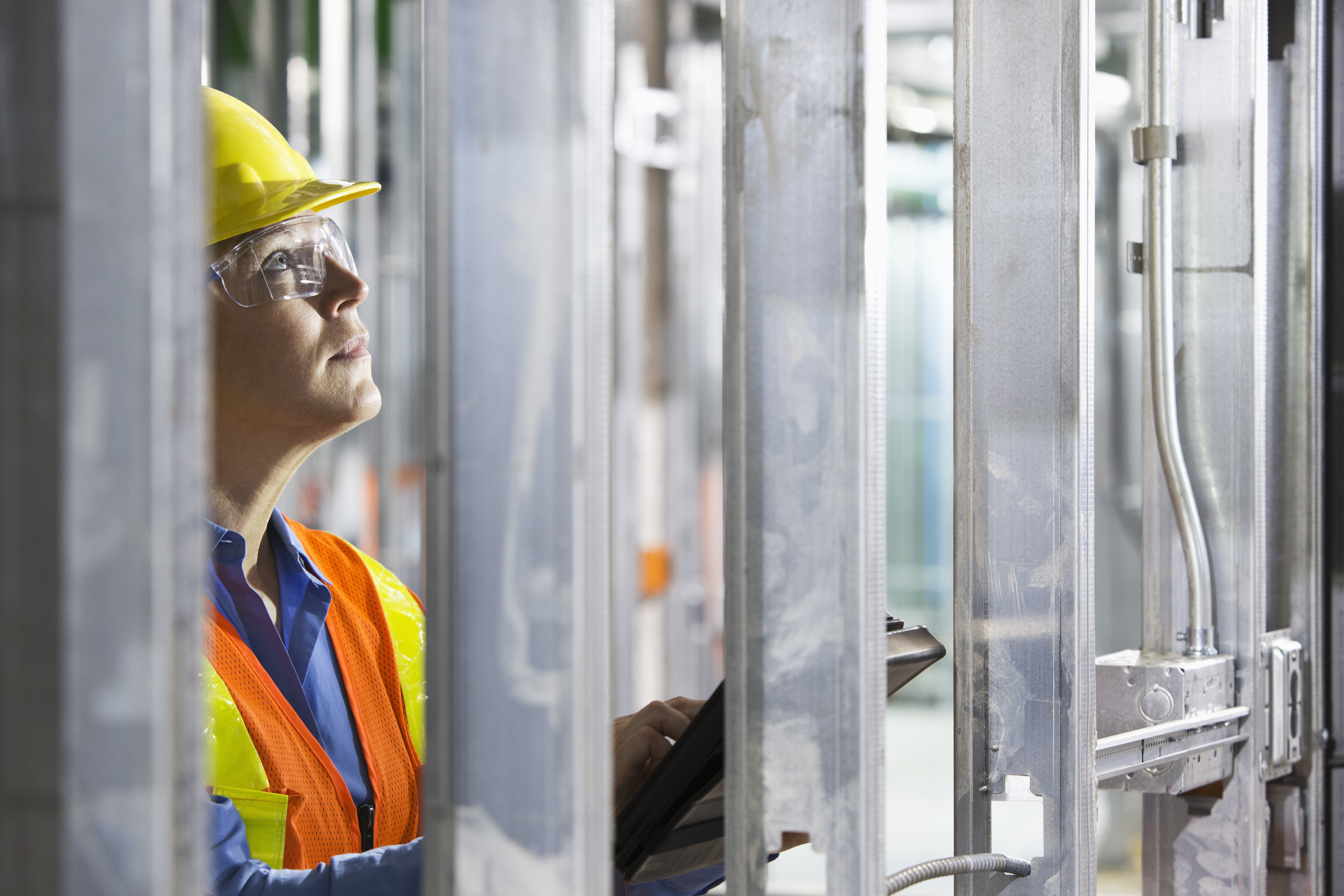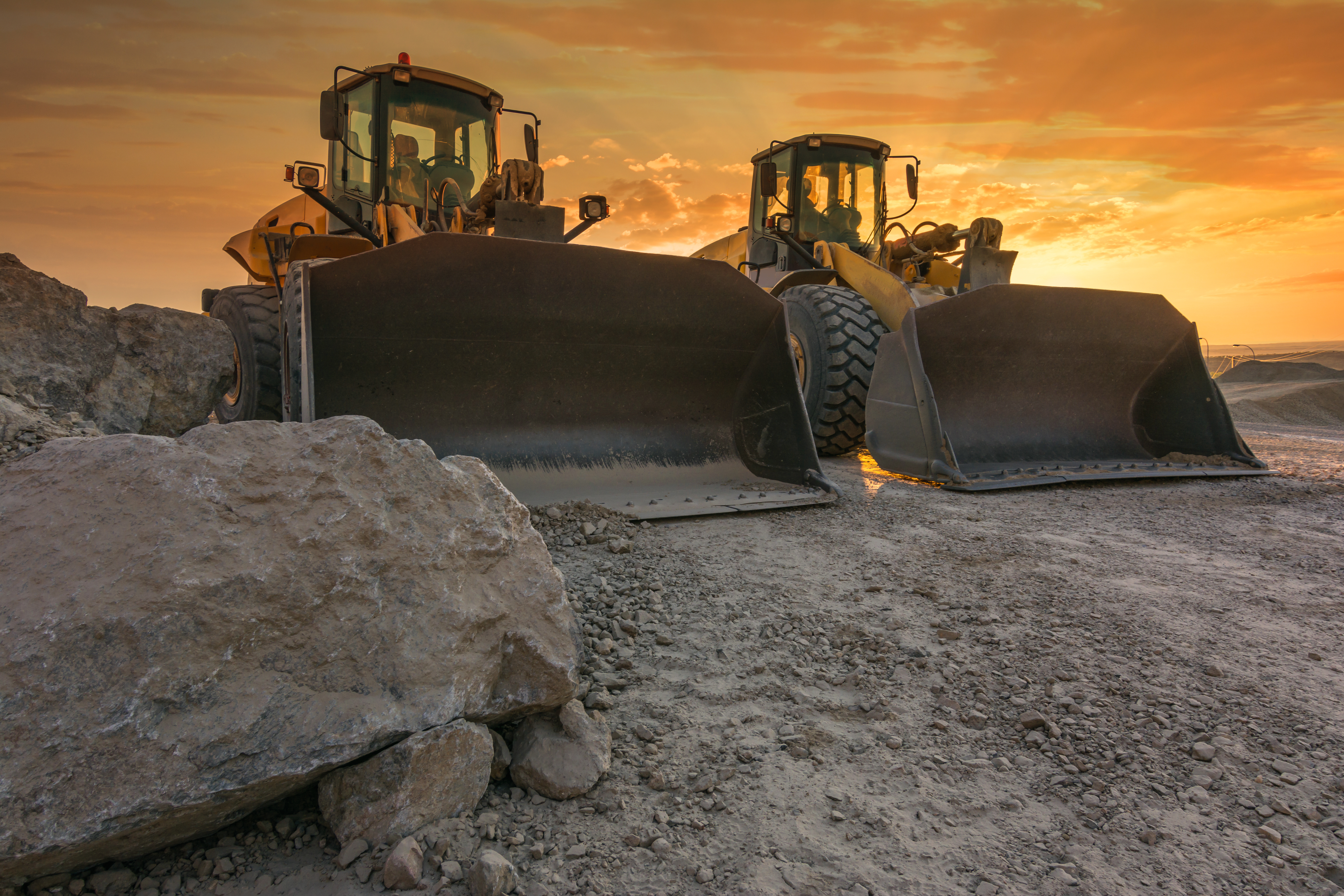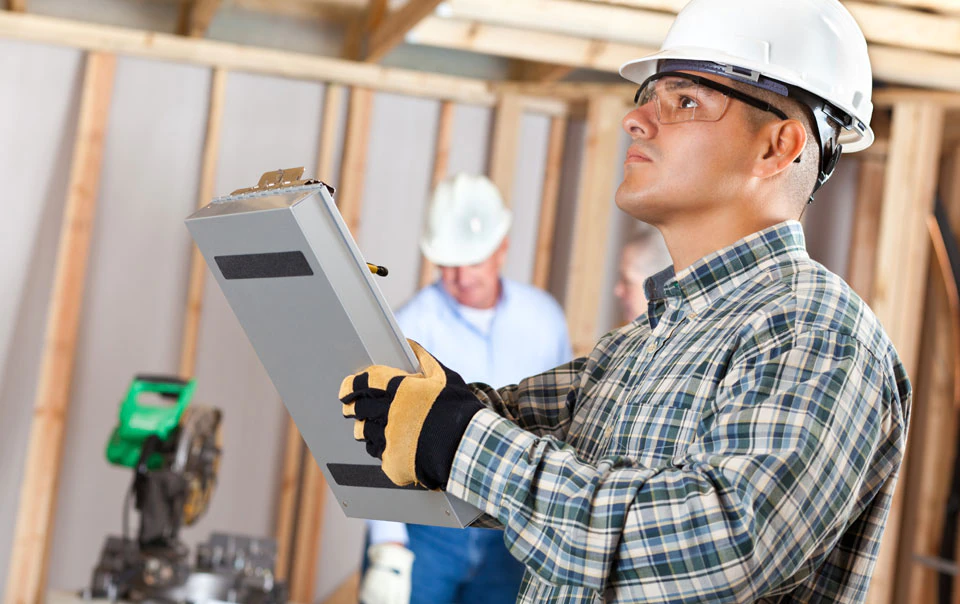Construction Defect Risks in High-Tech Manufacturing Facilities

(SPEECH)
[MUSIC PLAYING]
(DESCRIPTION)
Logo: Travelers. Text: Construction Defect Risks: Construction for High-Tech Manufacturing Facilities. Hard hats and high tech. Many large warehouse buildings sprawl across a flat landscape. A device manufactures microchips. Text: Mike Koppang, Construction Forensic Specialist, Travelers.
(SPEECH)
MIKE KOPPANG: Domestic construction contractors face great opportunities and great challenges in the growing need to build facilities for the manufacture of high-tech products, like semiconductors, electronics and more. The large and complex nature of these projects creates the potential for costly construction defects.
(DESCRIPTION)
Construction defects and complex builds.
(SPEECH)
From compromised clean rooms to faulty electrical systems, the construction of facilities for high-tech manufacturing introduces the possibility of unique defects.
(DESCRIPTION)
Defects can affect both facility integrity and product performance. Robotic machines move across a factory floor. A man wearing a reflective vest walks between rows of solar panels.
(SPEECH)
These can not only jeopardize the integrity of new facilities, but also compromise the dependability of manufactured products. Consider the potential for the following risks.
(DESCRIPTION)
Text: Global communication and getting things right. Aerial footage depicts a vast manufacturing complex below.
(SPEECH)
Because so many high-tech manufacturing facilities have been constructed overseas in recent decades, much of the engineering and design expertise is also overseas.
(DESCRIPTION)
Three people examine a blueprint. A person gives a presentation in a sunlit conference room.
(SPEECH)
Designing cutting-edge facilities demands complex global coordination among large, specialized teams, which can require navigating potential language and cultural barriers.
(DESCRIPTION)
Text: Design misinterpretations can result in structural defects. A man and woman examine a digital blueprint on a tablet. The woman gestures to the surrounding room as she and the man walk through it.
(SPEECH)
Miscommunications can lead to misinterpretations or mismanagement in the design process, including value engineering changes, which can result in engineering flaws.
(DESCRIPTION)
Text: Labor shortages and less experience. Large machines fill a factory floor.
(SPEECH)
The lack of domestic experience with high-tech manufacturing facilities can impact the construction jobsite workforce as well.
(DESCRIPTION)
Text: Inadequate workforce leads to substandard practices.
(SPEECH)
With a shortage of labor experienced in this type of construction, contractors may find it difficult to attract the right talent.
(DESCRIPTION)
Men pour concrete onto an unfinished rooftop. A man wearing a construction helmet uses a tablet.
(SPEECH)
Inexperienced labor may put projects at an increased risk of improperly used techniques, equipment or materials, which may lead to defects.
(DESCRIPTION)
Text: Tight tolerances and tiny deviations. A digital 3D replica of a building appears.
(SPEECH)
The highly technical nature of these builds requires exact adherence to specifications.
(DESCRIPTION)
Text: Slight deviations from specifications can create significant defects. Men wearing PPE work in a factory.
(SPEECH)
Even the slightest deviation from specifications for floor levelness, temperature control, air pressurization or vibration absorption can lead to critical deficiencies.
(DESCRIPTION)
A man uses a microscope, then takes notes. Text: Experience and Expertise. A man and woman wearing hard hats have a discussion as they eye a tablet.
(SPEECH)
Travelers' construction risk control specialists are well-versed in the nuances of constructing high-tech manufacturing facilities.
(DESCRIPTION)
Text: Best practices guidance for effective quality control. Two men wearing hard hats smile and shake hands.
(SPEECH)
Our specialists can help elevate your construction quality control with best practices, strategies and guidance for materials handling, design changes, quality inspections and subcontractor selection.
(DESCRIPTION)
A man gives a presentation, including digital and physical building replicas. Text: For claims, our dedicated specialists perform root cause accountability analysis.
(SPEECH)
Also, our construction forensic specialist team helps identify the root cause of defects in the event of a claim so that the right party bears the responsibility.
(DESCRIPTION)
Logo: Travelers.
(SPEECH)
To learn more about how Travelers supports the construction of high-tech manufacturing facilities, talk to your independent agent or visit travelers.com/construction.
(DESCRIPTION)
Talk to your independent agent or visit travelers dot com slash construction. © 2025 The Travelers Indemnity Company. All rights reserved. Travelers and the Travelers Umbrella logo are registered trademarks of The Travelers Indemnity Company in the U.S. and other countries.
From clean energy components and semiconductors to the end products in which they’re used, U.S. ambitions to increase onshore high-tech manufacturing are growing.
The more sophisticated the build is, the more risk there may be. Strict technical specifications, stringent building codes and specialized labor involved in building multibillion-dollar, high-tech manufacturing plants can add layers of intricacy and interdependency. Just one mistake, miscommunication or miscalculation could lead to a construction defect claim.
Mitigate these construction defect risks on high-tech manufacturing facility builds.
Design misinterpretations and value-engineering changes
Construction defects that trace back to design issues can be amplified on high-tech manufacturing facility projects. The engineering of these massive, highly sophisticated facilities often requires collaboration between unusually large, specialized design teams, with in-house resources and third-party firms each handling specific aspects of the project plan. Some design teams may even be in other countries. Misinterpretations or mismanagement of the design and construction process – including any value engineering changes made along the way – can lead to critical flaws that contractors could be held liable for down the road if they were involved in any part of the design.
Tight tolerances and intricate integrations
Unlike other types of buildings, high-tech facilities may have to adhere to precise construction tolerances to ensure optimal operational efficiency. They may also require the intricate integration of sophisticated, sensitive, often automated equipment, systems and environmental controls to maintain desired operating conditions. Even the slightest deviation from specifications for floor levelness, temperature control, air pressurization, vibration absorption and more – including any technologies installed to regulate these variables – could cause issues with plant or product performance that might lead to construction defect claims.
Product or material availability and failures
Due to their complex operational requirements, high-tech manufacturing facilities are often designed with specific products and materials in mind. Extenuating circumstances – from unexpected supply chain disruptions to unforeseen compatibility issues – can create barriers to obtaining the required resources. Projects stalled by material availability or performance problems can put timelines and budgets at risk, and pressure to keep on track often requires making quick decisions about using backup suppliers and alternate or modified materials. Failure to thoroughly evaluate the quality, reliability and integrity of replacement vendors, products or materials prior to procurement or installation can have serious impacts on facility performance and safety, potentially increasing construction defect risk.
Workforce shortfalls and language barriers
High-tech builds could also require large teams with specialized skills. Since large-scale construction of advanced manufacturing facilities is gaining momentum in the U.S., qualified workers with training and experience in the techniques, equipment and materials required to meet the design requirements for these buildings can be hard to find, attract and retain. Careful communication and coordination between independently operating designers, engineers, contractors and laborers on the project team is crucial but may be difficult to manage and maintain. Furthermore, project stakeholders may not have extensive experience building on American soil, so language and cultural barriers, lack of familiarity with domestic building codes and techniques, and architectural designs translated to English can complicate builds. Such challenges may make it more difficult to successfully collaborate, construct and deliver projects according to plan.
Insufficient commissioning and turnover
From ensuring that a project meets the design and code requirements to training building operations and maintenance staff, the final stages of a high-tech manufacturing facility build can be the most critical to its success. Without careful planning and execution, defects or deficiencies discovered during the testing and verification process may be more difficult, timely and expensive to resolve. More important, if building owners and operators do not receive comprehensive documentation and instruction on how to properly run and maintain the facility, post-turnover, architectural, structural or mechanical malfunctions could come back as construction defect claims, which can be complicated and costly.
Comprehensive risk management is critical to help mitigate construction defect risk on high-tech manufacturing builds.
From pre-planning to post-delivery, taking the necessary precautions to help prevent or minimize the potential impact of structural and system failures can help ensure your final build is free of critical flaws that could be traced to a construction defect.
Incorporate key risk management strategies and best practices.
- Diligent project selection, planning and management. Establish and maintain clear lines of communication among key stakeholders, suppliers, owners, designers, subcontractors and team members through every phase of the build.
- Meticulous, ongoing project documentation. Create and retain critical records – from receipts for expenses incurred and copies of subcontractor certificates of insurance to photographic evidence of workmanship and sign-off on any value engineering decisions.
- Rigorous quality assurance and control. Carefully inspect products and materials prior to installation. Provide keen oversight of worker qualifications and job performance and third-party or technology-assisted testing and validation of construction quality and building performance.
- Comprehensive contractual risk transfer. Ensure that all contracts with third parties (e.g., subcontractors, vendors and suppliers) address contractual risk transfer and spell out indemnification and insurance requirements. These contracts should also clearly define project scope, schedule, budget, team responsibilities, insurance and license requirements, as well as procedures for submitting and approving change orders.
Partner with a trusted insurance provider to help mitigate construction defect risk.
Choose a carrier that has specialized coverage and deep experience in construction. Travelers has dedicated construction claim investigation specialists and a state-of-the-art forensics lab. Travelers’ industry-leading risk management solutions and services are designed to help protect contractors from the potentially devastating impact of a construction defect claim. Deep subject matter expertise coupled with advanced incident analysis to identify emerging issues and trends driving the frequency and severity of construction losses is a key differentiator. Get comprehensive, customized coverage and consultation to help mitigate construction defect risks.
To learn more about Travelers innovative insurance and risk management solutions for construction companies, contact your agent.



